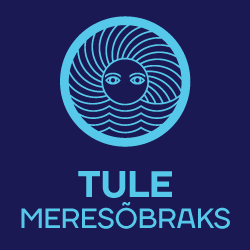The sea is lifestyle and inspiration
Help maintain and create Estonian maritime culture!
The sea separates and, at the same time, joins countries and people. Along with goods transported by sea, various aspects of knowledge, beliefs, skills and experience that have moulded the culture of people by the sea have also been constantly moving. The special maritime culture of coastal people reflects itself both in material as well as intellectual cultural heritage that includes lifestyle, myths and traditions.
PHYSICAL RESOURCES OF MARITIME HERITAGE
The physical resources of maritime heritage include various things from net-mending needles to watercraft of every size to construction works and civil engineering works related to the sea, such as lighthouses, naval fortresses and historical harbours. The Baltic Sea is also extremely rich in underwater heritage and hides allegedly up to 10,000 shipwrecks and other historical objects of even huger quantity, the discovery of which requires luck, knowledge of underwater archaeology and diving skills.
APPRECIATION OF HUMAN CONNECTIONS TO THE SEA
The Maritime Heritage is not only involved in the protection of physical artifacts, but also in increasing appreciation of the many human connections to the sea. This heritage can be found in the traditions and experience of the people who place a high value on the coastal region as their living environment and for whom the sea is simultaneously work, food and entertainment.
Maritime culture may be defined as a set of knowledge, skills and experience related to maritime affairs of one nation or region. At the same time it is something that is completely different in the case of single carriers of maritime culture: in the case of a seaman it is the skills and knowledge of navigation and maritime language, but for a coastal dweller who lives on a small island it is coping with everyday life; for a coastal fisherman it is the skills needed to knit a net or the knowledge of the best fishing seasons and areas, and for an amateur sailor it is knowledge of maritime safety. For seamen’s families, it has, however, for centuries meant coping without the constant presence of the father of the family at home.
The sea has also brought us new things and skills. In the 19th century when the Estonians started to themselves build ships and sail the ocean, seamen became distinct from the rest of the village population in terms of the customs, skills and knowledge brought from elsewhere. Their houses were of a more innovative architectural style and recalled urban buildings. The interior design of their homes contained inventory from ships as well as objects collected while seafaring. Seamen themselves wore urban clothes, used foreign words in their speech, told stories about faraway countries and different people and, of course, sang! The seamen’s songs were old and well-known as well as new and unfamiliar.
SEA IN CULTURE
We can also actually even today see the influences of the sea in almost every field of life and culture with which we come into contact on a daily basis. The maritime heritage, i.e. the one inherited from previous generations and the new one generated by ourselves or assumed from elsewhere has moulded the Estonian culture as a whole throughout the ages. Maritime culture is a synthesis of many different aspects of culture, which include art, design, clothing fashions, music, theatre and cinema.
WHY ARE HERITAGE AND HISTORY IMPORTANT?
Ancient Estonians did not succumb at all to the powerful Vikings for their seafaring skills. Our ancestors could hunt for seals and use every single part of a seal for living. They also could communicate with the sea and forecast the weather according to it. Some of our contemporaries cannot even eat fish, not to speak about cleaning or catching it. Many maritime traditions and skills no longer exist.
The aim of the Maritime Culture Year is to maintain and create maritime culture through various events and activities. Live with the sea and let it inspire you!



